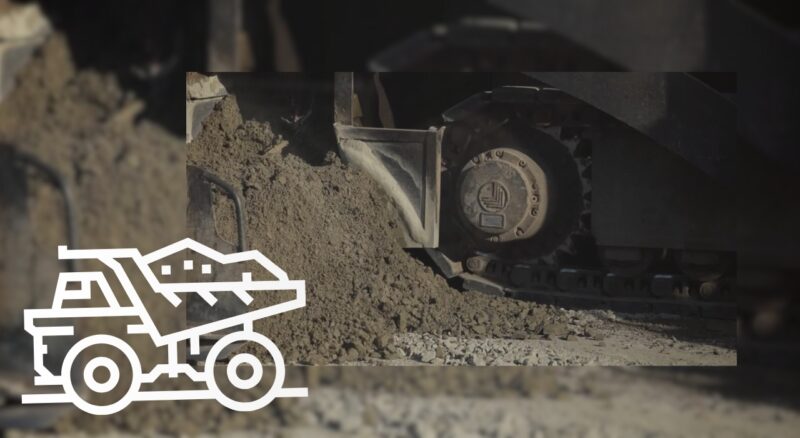When it comes to construction projects, particularly those that involve setting fence posts, one of the most common adages is: “One bag of concrete per post.” It’s the sort of rule of thumb that seems to have been passed down from generation to generation of DIY enthusiasts and professional builders alike. But is this rule always true?
As an expert in construction materials, let me lead you down this concrete-laden path and unpack this golden rule.
The One-Bag-Per-Post Rule

Whether you’re a seasoned pro or a novice at DIY projects, the one-bag-per-post rule seems straightforward. However, there’s much more to this rule than meets the eye.
The Origins of the Rule
Like many rules of thumb, the origins of the one-bag-per-post rule are somewhat nebulous. It’s likely it emerged as a simple, easy-to-remember guideline for those new to fencing projects. Typically, a standard bag of ready-mix concrete is around 80 pounds, which, when mixed with water, yields approximately 0.6 cubic feet of concrete. This amount often proves sufficient for an average-sized fence post.
However, the simplicity of this rule hides the complexity of the task. Several factors can influence the amount of concrete needed, and they must be considered to ensure the stability and longevity of your fence.
Factors Influencing the Concrete Requirement
- Post size: Larger posts require more concrete.
- Hole size: The diameter and depth of the hole also dictate the amount of concrete.
- Soil type: Different soil types have different load-bearing capacities.
- Fence type: A heavier fence will require a more solid foundation.
- Climate: In areas with severe winters, posts need to be set deeper and may require more concrete to prevent heaving.
These variables make it clear that one size (or, in this case, one bag) may not fit all.
Ditching the Rule: Custom Calculation
Abandoning the one-bag-per-post rule means you’ll need a method to calculate the amount of concrete needed for each post.
The Mathematics Behind Calculation
Concrete is sold by volume (typically in cubic yards in the U.S.). To calculate how much you’ll need, you need to calculate the volume of your post hole.
- Measure the diameter of your hole in inches.
- Measure the depth of your hole in inches.
- Use the formula for the volume of a cylinder: V = πr²h (where V is volume, r is radius, and h is height).
- Convert your volume from cubic inches to cubic feet (since concrete is usually sold in cubic feet).
The result will give you a more accurate estimate of your needs.
Why Precision Matters
While it might be tempting to overestimate concrete needs to play it safe, unnecessary use has its drawbacks. First, it’s an additional expense. Secondly, concrete production has a significant environmental impact. According to a report from the International Energy Agency, cement (a key ingredient) accounts for 7% of global CO2 emissions. By precisely calculating your needs, you’re saving your pocket and doing a small part for our planet.
Case Studies: The One-Bag-Per-Post Rule in Action
To give you a clearer picture, let’s examine two real-life scenarios to illustrate how the one-bag-per-post rule can lead to different outcomes.
A Garden Fence
Imagine you’re building a small garden fence using 4×4 posts, and the holes are 9 inches in diameter and 24 inches deep. The one-bag rule might actually work in this case because the volume of the hole aligns fairly well with the yield from a single 80-pound bag of concrete.
However, the assumption here is that your soil is of average load-bearing capacity. If you have sandy soil, you may need more concrete to ensure stability.
A Privacy Fence
Now, consider a more substantial project – a 6-foot privacy fence using 6×6 posts. The holes are 12 inches in diameter and 36 inches deep. Using the one-bag rule in this scenario could lead to instability, given that the post and hole sizes are significantly larger. A custom calculation would yield a more accurate estimate and result in a stronger fence.
These case studies underscore the idea that while the one-bag rule might work in some instances, it certainly doesn’t apply to all.
The Science Behind Concrete and Post Stability
The importance of using the right amount for your fence posts isn’t just about cost-saving or environmental consciousness—it’s also a matter of basic physics.
The Science of Concrete
It is a mix of cement, water, and aggregates (rock, sand, or gravel). The cement and water form a paste that coats the aggregate. When the cement hydrates, it reacts with the water to form a hard matrix that binds the aggregates together into a durable stone-like material.
Concrete is known for its high compressive strength—meaning it can handle a lot of weight pressing down on it. However, its tensile strength—its ability to withstand forces that attempt to pull it apart or stretch it—is significantly weaker. That’s why the proper setting of fence posts is vital.
The Role of Concrete in Post Stability
It serves two primary functions in post installations:
- To anchor the post: Concrete forms a stable, solid base that prevents the post from shifting or tilting under the weight of the fence or external forces like wind or impacts.
- To prevent ground moisture from reaching the post: When correctly installed, concrete can act as a barrier against the moisture in the ground, helping to prevent wood rot in the post.
Balancing these considerations means getting the concrete mix and quantity just right.
Making the Right Decision

Given the importance of stability, you might think that using more concrete—rather than less—would be the safer bet. However, this isn’t always the case.
The Pitfalls of Excess Concrete
Using more than necessary can have several unintended consequences:
- Increased cost: Concrete isn’t cheap, and if you’re installing a long fence with many posts, the costs can quickly add up.
- More work: Extra concrete means more weight to carry and more time spent mixing and pouring.
- Potential for damage: Overfilling the hole can lead to concrete spilling onto the surrounding grass or plants, causing damage.
- Wasted resources: As previously mentioned, the environmental impact of concrete production is significant. Excess usage contributes to this footprint.
The Risks of Too Little of It
On the other hand, skimping on concrete can also lead to problems:
- Post instability: Not using enough can leave your fence posts susceptible to shifting, particularly in loose or sandy soils.
- Reduced lifespan: Posts that aren’t adequately secured with enough concrete may experience more strain and have a reduced lifespan.
It’s clear that both too much and too little concrete have their drawbacks. The key lies in the right calculation and understanding the factors at play in your specific project.
Are There Other Options?
Perhaps you’re wondering if there are alternatives to using concrete for your fence post project. The good news is, yes, there are!
Gravel or Crushed Stone

Gravel or crushed stone can be used in some situations. This is a particularly good option for areas with good drainage, as water can pass through these materials without causing problems. The downsides? It may not provide the same level of stability as concrete, especially for larger, heavier fences.
Metal Post Anchors
Metal post anchors or spikes can be driven into the ground and provide a socket into which the wooden post is inserted. These can be a quick and easy option for smaller, lighter fences but may not offer sufficient stability for larger, heavier fences.
No-Dig Fence Systems
Some innovative products on the market allow for fence installation without any digging or concrete. These systems use a base that is driven deep into the ground using a sledgehammer or jackhammer and then have the post secured to them.
These alternatives each have their advantages and drawbacks. The best choice depends on your specific project needs and conditions.
The Verdict: One Bag or Not?
The one-bag-per-post rule is an attractive proposition due to its simplicity. However, as we’ve seen, this rule doesn’t hold true for all fence post projects. A myriad of factors, including post size, hole size, soil type, and fence type, must be taken into consideration. Therefore, while the rule may work as a starting point, a more accurate calculation often yields better results, both for the strength of the fence and for the environment.







